Starting Points for Abstraction: Week 2 Chance, Recycling and Intuition
June 29, 2021

Pieces of paper kitchen towel were torn into larger and smaller shapes, about ten in all and dropped on to a piece of watercolour paper. They were left as they fell, overlapping or not overlapping. Using an old toothbrush acrylic ink was spattered over the whole. A wooden skewer was used to draw out a few lines from the larger spatters and then left to dry completely before removing the pieces of paper towel.
Chance and Recycling
Jean Arp, one of the leading artists of the Dada movement used chance for several of his works. He tore up papers and collaged them where they fell. Some of the works appear too ordered for this to have been the whole story and I suspect he may have put some torn shapes into a hat or equivalent and placed them on the support intuitively as each was drawn out of the hat in a random sequence. He also tore up a woodcut made in 1920 into several pieces and rearranged them on a support in 1954. For Arp this was the artwork. For us it may be or it may be that such methods could be employed as the starting points for developing an abstract painting.
You could certainly do this with a failed painting or with a copy of a suitable good drawing or painting. The pieces could be cut into regular pieces and rotated till you felt a successful arrangement had been achieved or you could shuffle them and place them in a grid in the order that you drew them out. You are in charge of whether to work mainly with chance or mainly with design and whether to develop the work further by adding other media.
The pieces could also of course be dropped on the support and glued where they fell. If a collage was not required it would be easy to make a series of photographs of several dropping events with pieces from the same art work. The resulting photographs might suggest an interesting painting or be art works in their own right separately or collectively. Old greetings cards, magazine pages etc. could be similarly recycled.
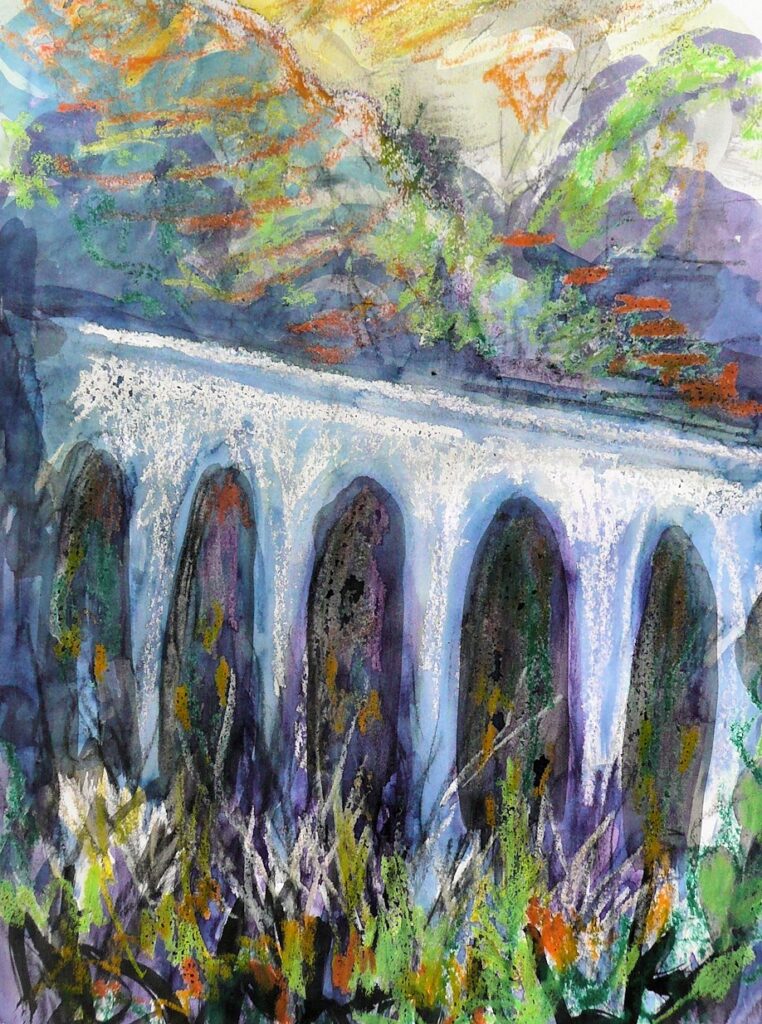
Some of the fragments are below and are interesting in their own right as well as being perhaps the inspiration for further abstract works.
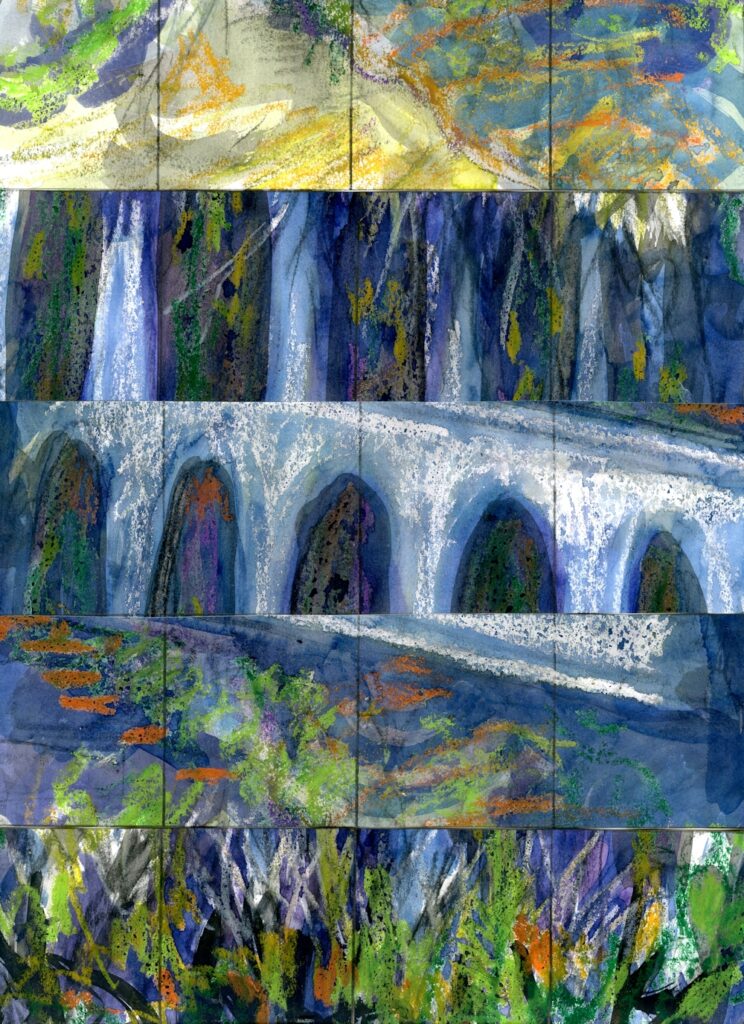
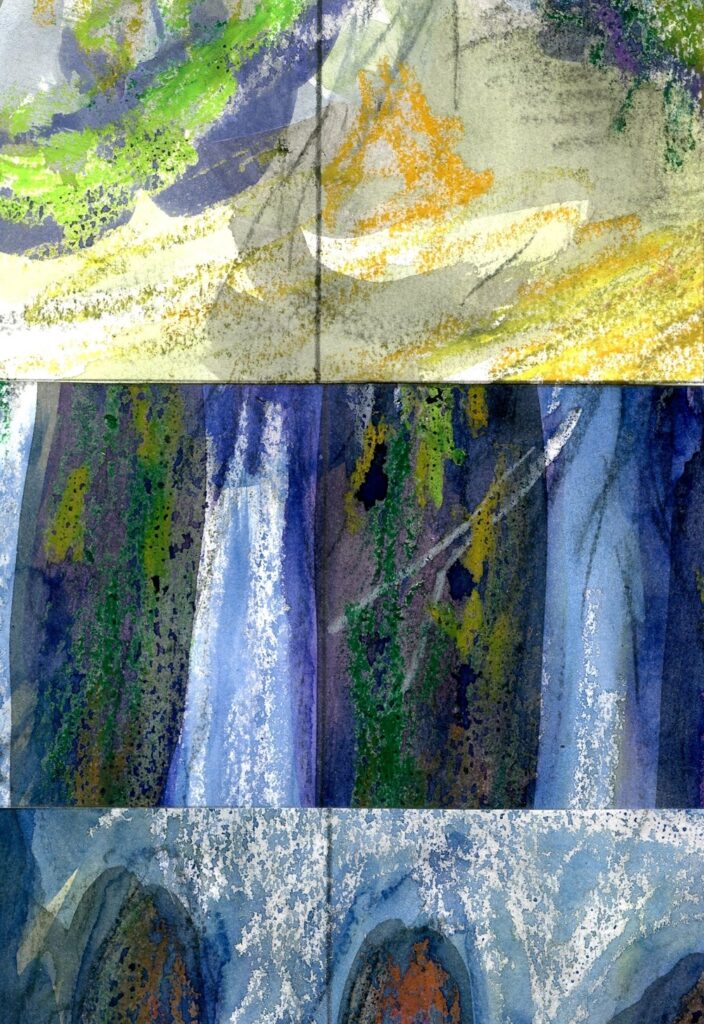

A few are shown in detail below;

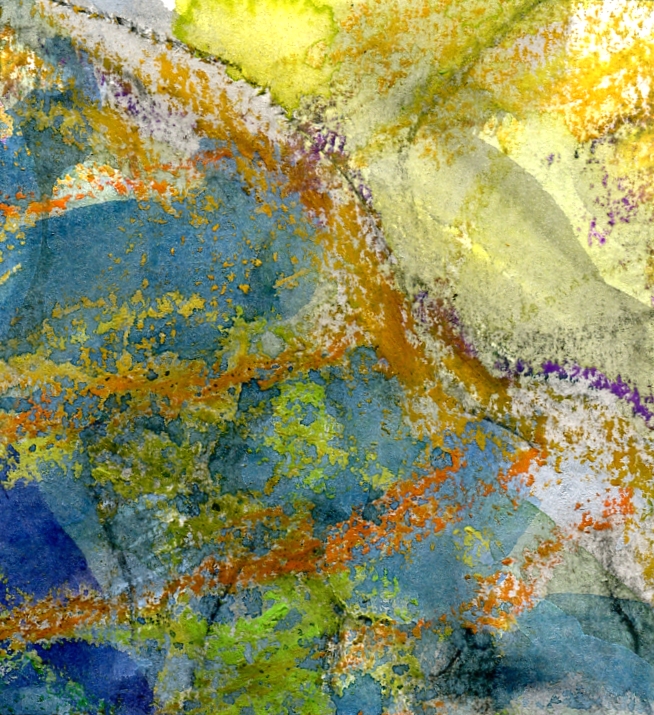
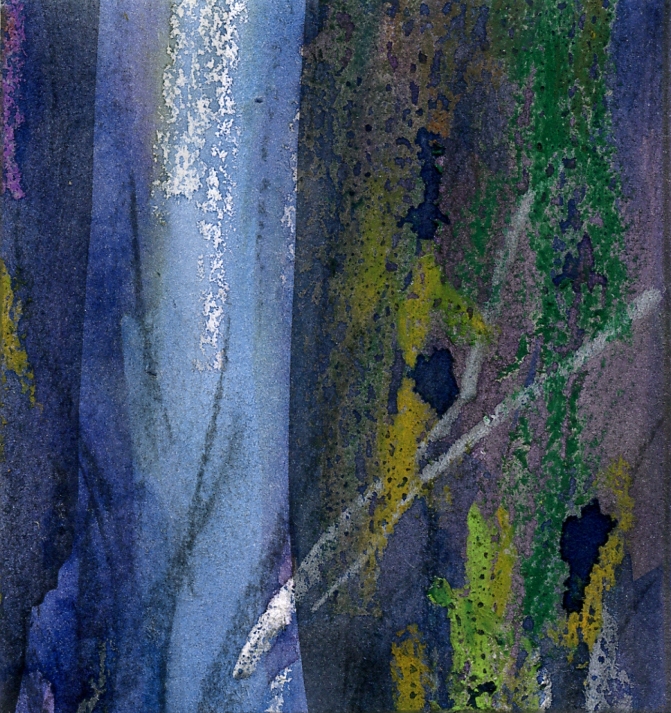

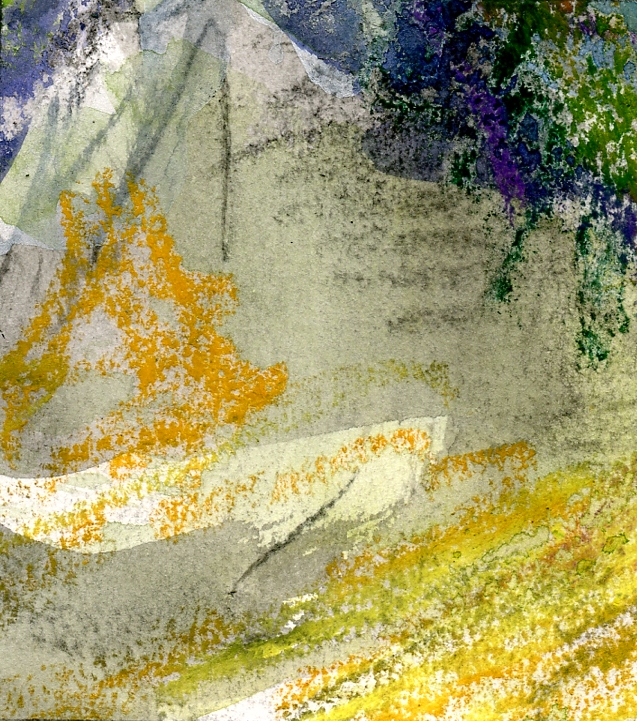
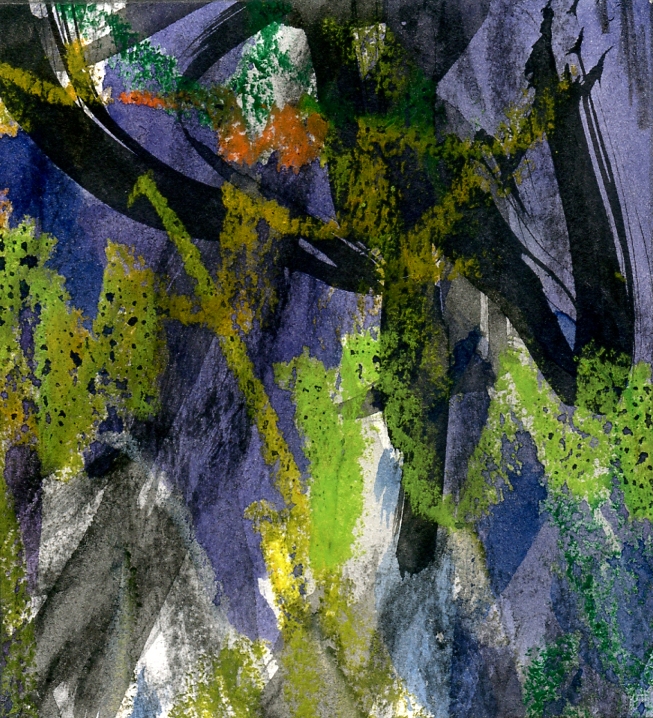
Exploring Negative Shapes
The technique below can be as designed, intuitive or suggested by a natural form as you wish. Anything from geometric shapes to tea cups or branching trees can be fun to investigate. They can remain as flat areas of colour or be blended for some great intertwining effects.
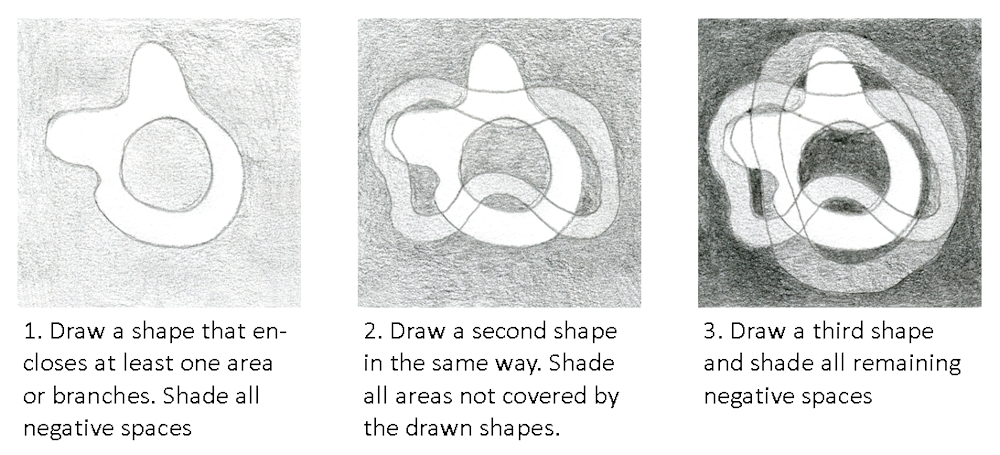

No blending.
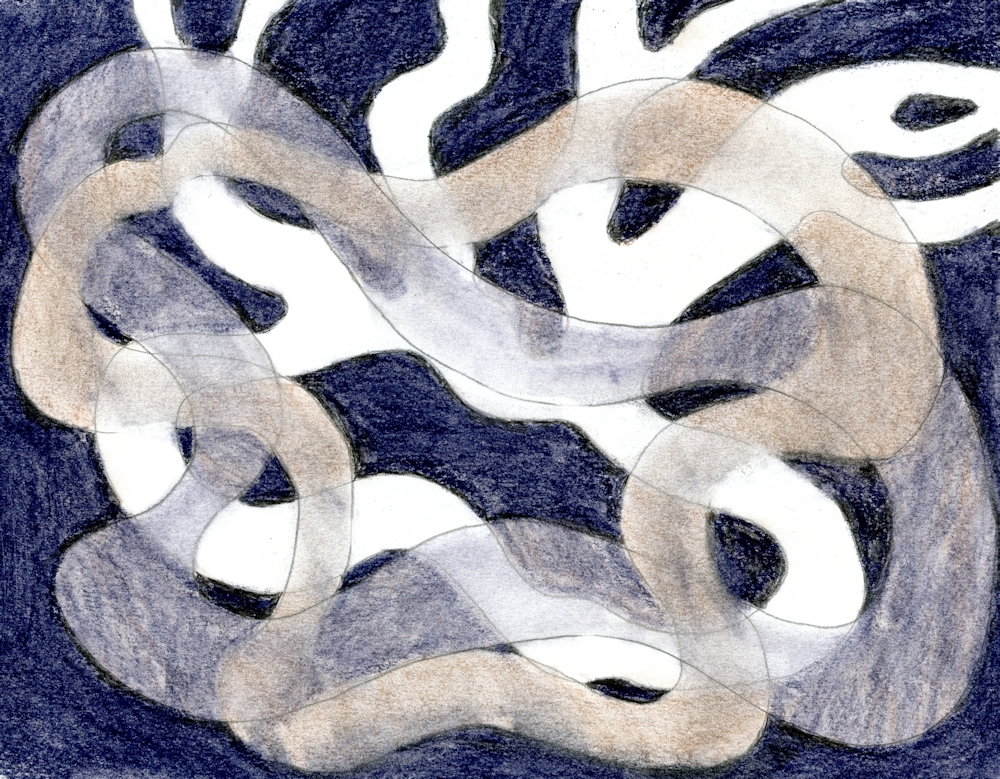
The two coloured shapes were blended including where they crossed the white shape.
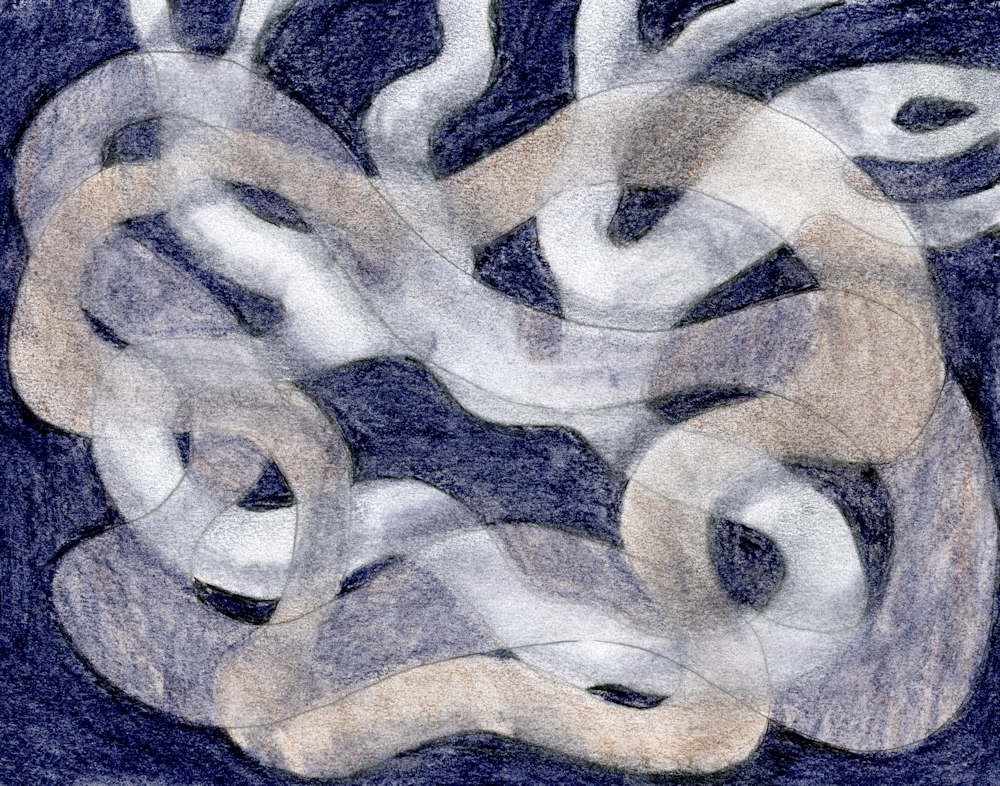
In the finished drawing all shapes were blended leaving some of the white shape unblended. Similar effects could be achieved in acrylic or watercolour using glazing techniques.
The paint left on your palette;

At the end of a painting session it is all too easy just to slide unused paint into a trash can or let it congeal uselessly on the palette. Why not just get a brush or palette knife and spread it almost without thinking on to a sheet of thick card or paper. (you are also allowed the think about it but not with the aim of making it look like a tree or a bird or a flower.) It may do but don’t intend it. It may turn out that it is your first Colour Field work! But my guess is that it may need further development.
Abstract Expressionists are subdivided into two groups of rather different artists
The Action Painters such as Jackson Pollock
https://www.pinterest.co.uk/jhall1282/abstraction/jackson-pollock/
and the Colour Field Painters such as Mark Rothko, Clyfford Still, Barnett Newman.
https://www.pinterest.co.uk/jhall1282/abstraction/colour-field-artists/
Although never listed with these American artists perhaps Patrick Heron should be included here for his colourful gouache paintings.
https://www.pinterest.co.uk/jhall1282/abstraction/patrick-heron/
Practical:Our next practical session will involve using chance, recycling and intuition for beginning an abstract painting or drawing.
Choose to work on one or more of the following;
Aim to have a drawing/painting copy or original to cut or tear up, perhaps a large magazine image. It does become more personal to use your own drawing though. You will also need a support for painting on and your usual paints.
1.Old drawing/painting: either cut up and rotate pieces till they make an interesting arrangement or shake and draw randomly from a container laying them in a grid one by one in the same order that they are drawn out. You may collage the pieces and work over them with more paint or drawing or photograph/trace them and use the image as the basis for your painting.
2. Chance; dropping cut or torn paper on to a support, spatter with paint, remove the paper when all is dry and develop the painting intuitively.
3. Recycled paint; Use what is left on your palette by just painting it out on to a piece of card or paper, perhaps with some intent like putting the pale colours in the middle or the brightest colours in the middle or irregular bands of colour, varying the sizes of colour patches ( this happens naturally as more of some colour than others remain). Colour mixing also happens depending on the mixes on the palette and how much they become blended as they are painted out. This should be done prior to the session so that the development process can take place at next week’s session.
Your paintings;

From cut and rearranged pieces of a river painting with added paint
by John
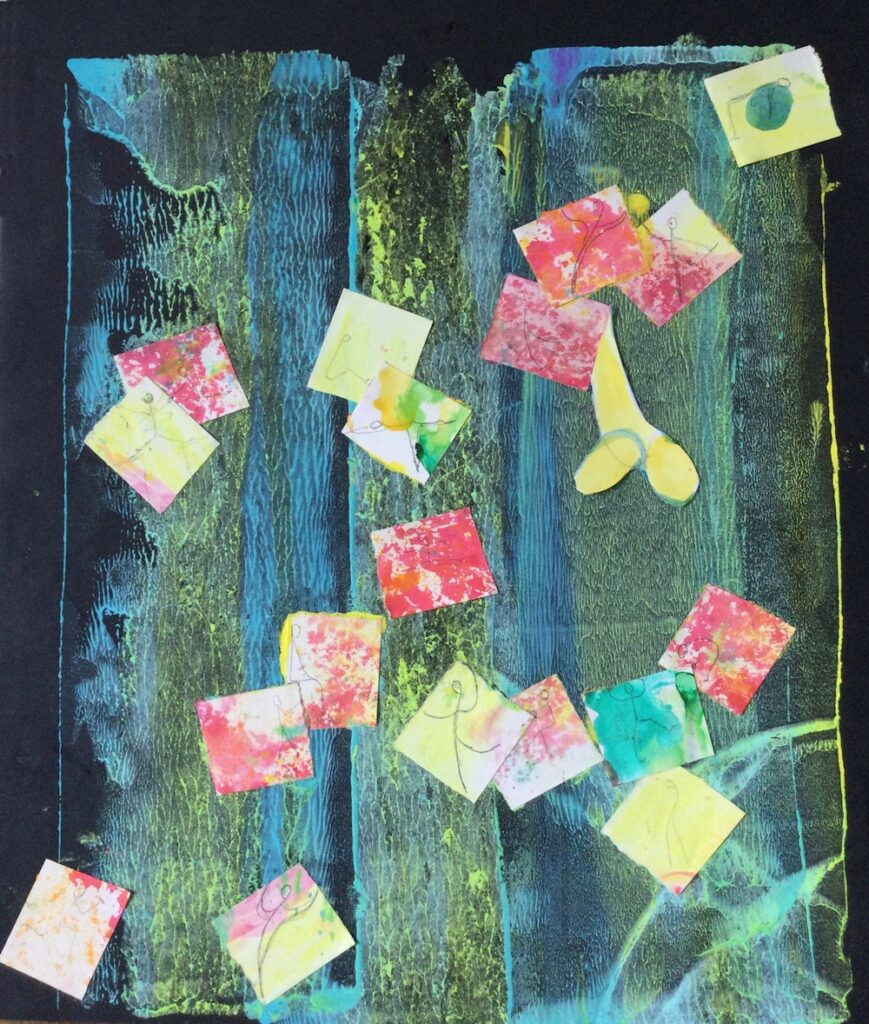
by Virginia
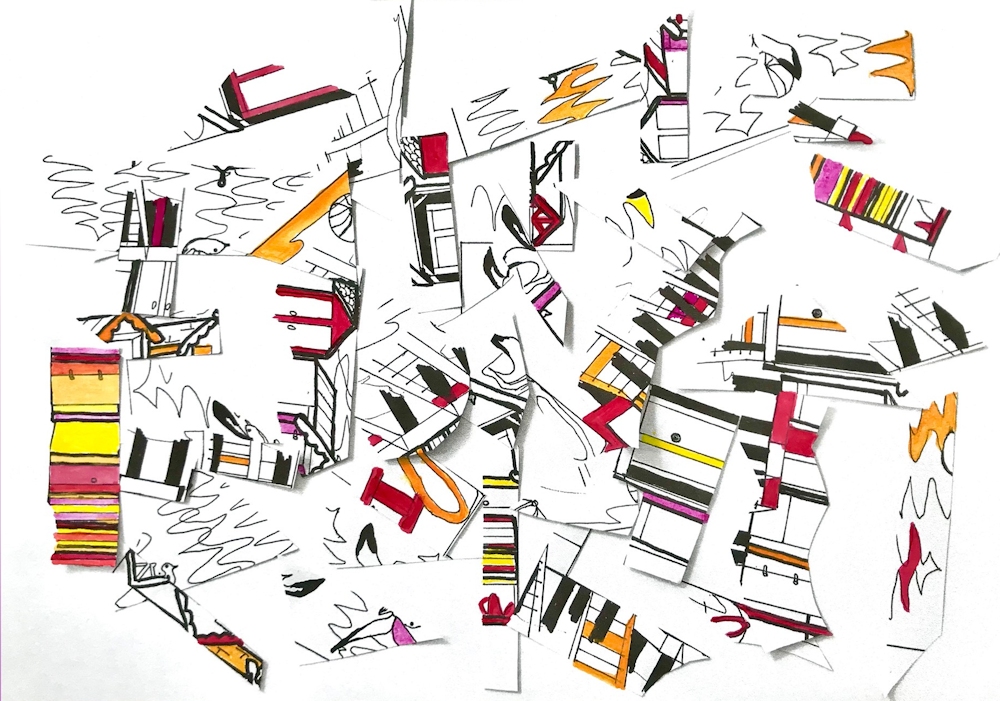
Collage of a cut, rearranged pen and ink drawing with added colour
by Heather
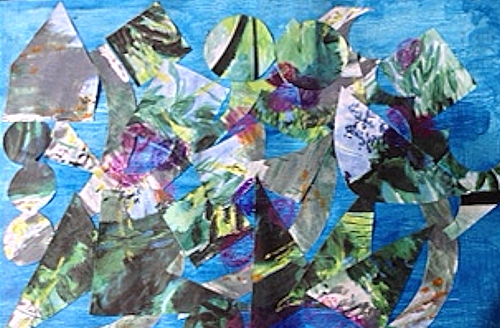
Collage from rearranged pieces
by Liz
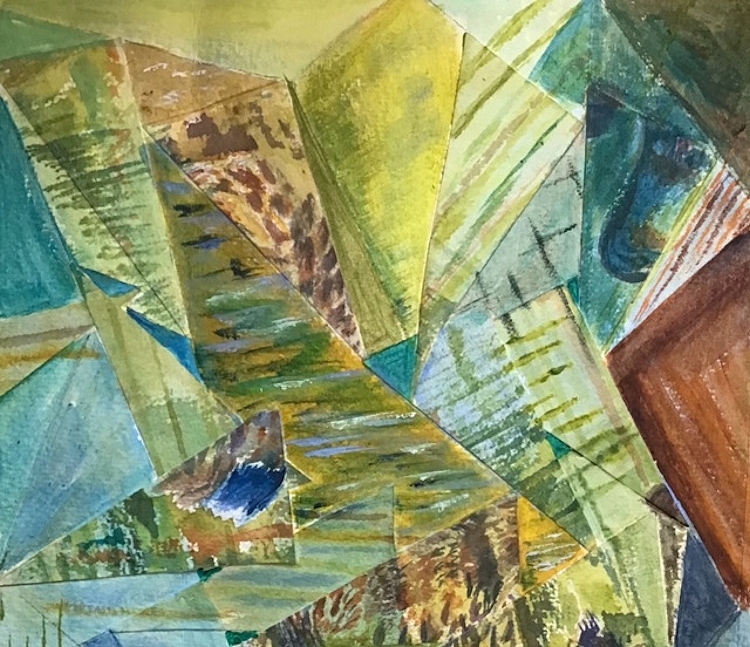
Collage by Sandra

by Malcolm
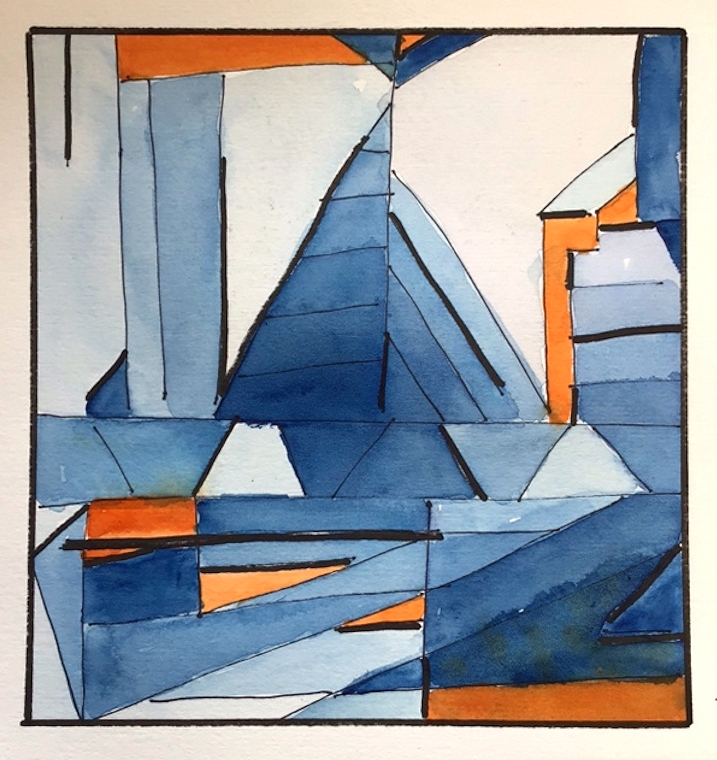
by Sandra
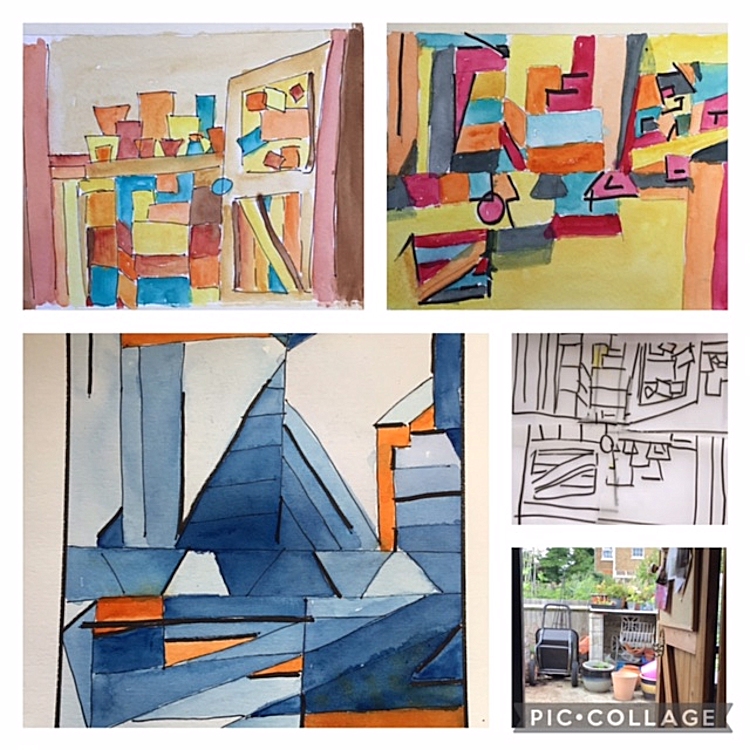
Reorganizing a drawing, painting or photographic image can be a useful starting point to look at the shapes and forms in a more abstract way.
The simplest form of this is to rotate a landscape through 90 degrees.
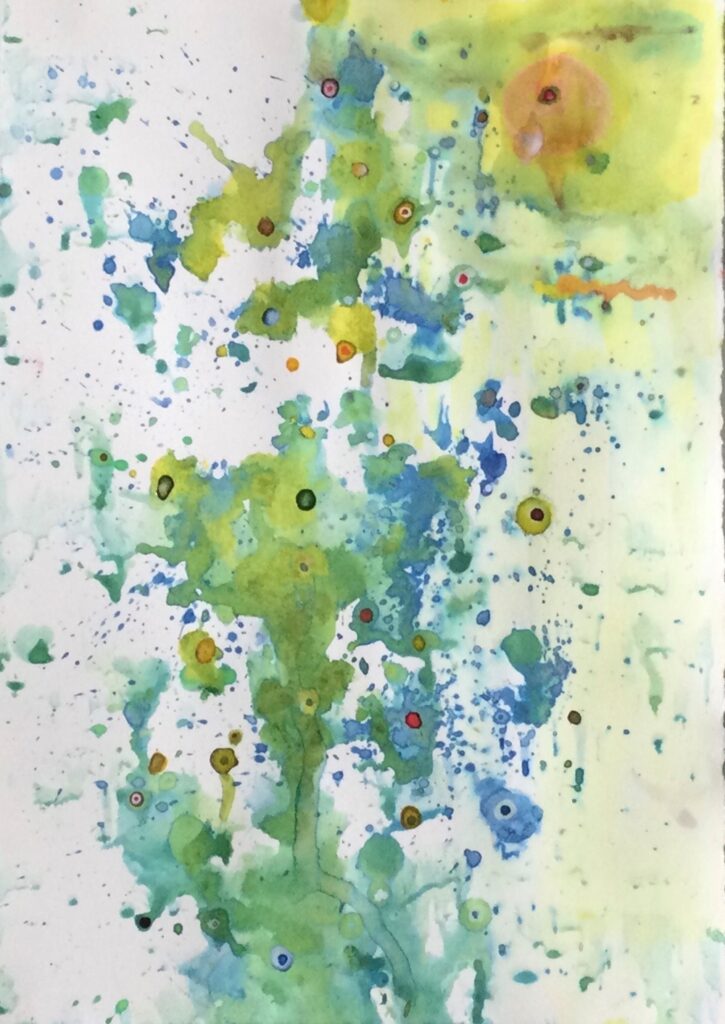
by Virginia
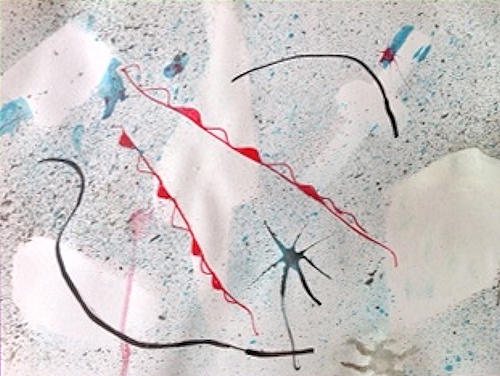
Masked shapes, spattered and worked into intuitively
by Liz
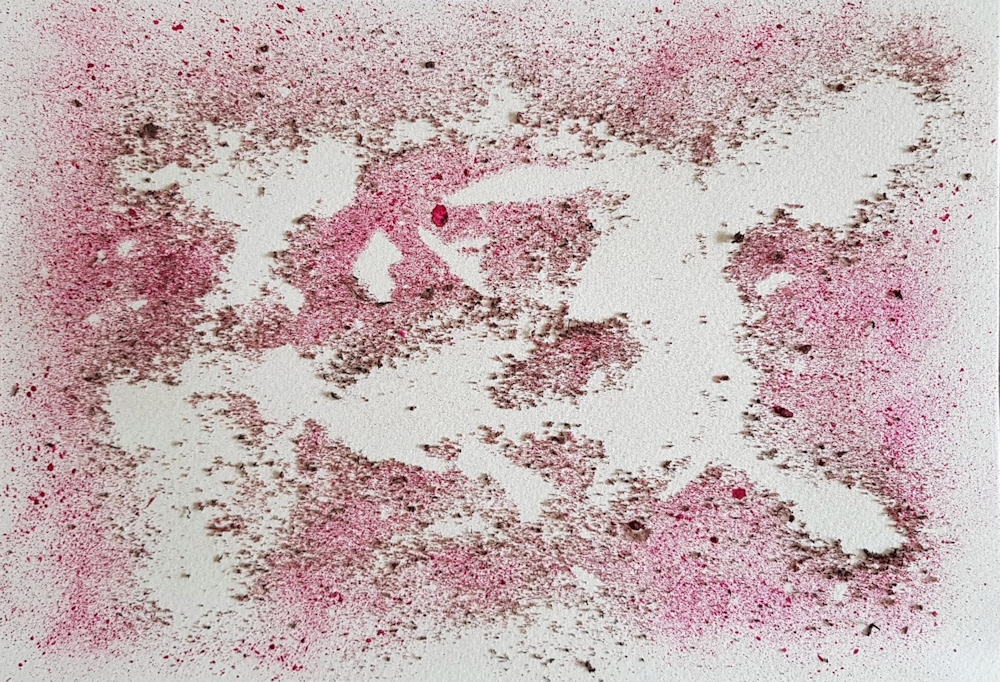
by Malcolm
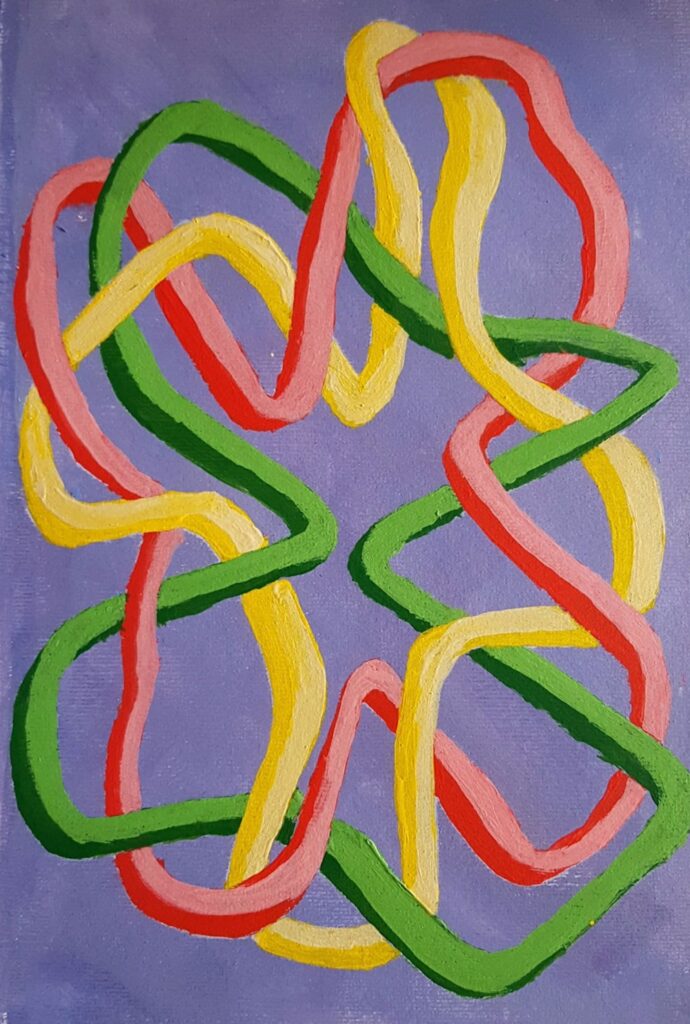
by Malcolm
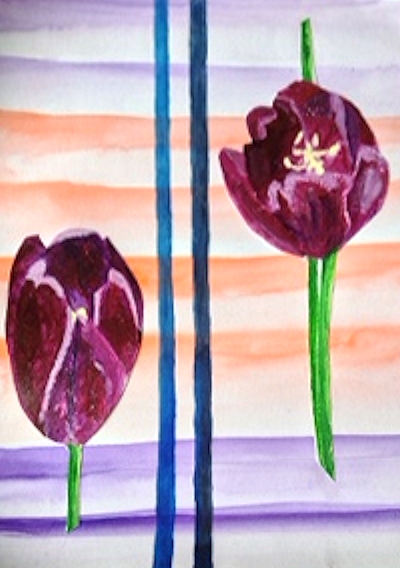
by Liz